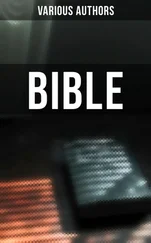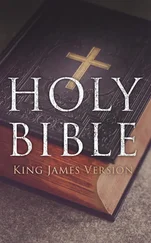What is the law concerning an entry, the cross-beam of which was partly above twenty ells in height and partly below, and also concerning the covering of a booth, part of which was over twenty ells in height and the other part lower than twenty? Said Rabba: "An entry is made invalid by it but a booth is not affected." Why does he say that a booth is not affected by it? Because we assume that part of the covering of a booth, which is above twenty ells, to be so frail that it does not matter. Cannot the same thing be said concerning the cross-beam of an entry? If this were said with reference to a cross-beam, then it will seem as if there is no foundation for the cross-beam, and it is suspended in mid-air. Is this not the same with a booth? If it be said, that that part of the covering of the booth is so frail that it amounts to nothing, it cannot serve as protection against the sun and there will be more sunshine than shade, and this would make the booth invalid? But, as such is not the case and the frailty of the covering is as a matter of fact only imaginary, it does cause more shade than sunshine, and the booth is not made invalid, why should it not also be the same with the cross-beam, the frailty of which is also only imaginary while in reality it is as firm as if fastened with nails? Said Rabha of Parzekaia: "If such a defect occur in a booth, which is intended for the personal use (of a man), it will be remedied through the thoughtfulness of the man (who is bound to keep the commandment properly), but a cross-beam of an entry which is intended for public use will be neglected, because one man will rely upon another to remedy the defect, as the proverb goes, that a pot used in common is never warm nor cold" (one relies upon another to keep it in its proper condition). Rabhina said: The booth being a fulfilment of a biblical commandment needs no further safeguard, for it will be kept under any circumstances; but the entry being a purely rabbinical institution must not leave any loopholes, by which the entire law may eventually be circumvened.
What is the law, finally? Rabba bar R. Ula said, "Both are invalid," and Rabha said, "Both are valid," why? Because the twenty ells refer to the space between the ground and the crossbeam or covering, respectively, and even if part of either be above twenty ells, the space is not changed in volume. Said R. Papa to Rabha: I know of a Boraitha confirming this statement: "An entry which is more than twenty ells high and thus is higher than the door of the Temple should be lowered, and the space between the ground and the ceiling in the Temple itself was twenty ells high." R. Shimi bar R. Ashi objected to this: "We have learned further on, how should we remedy the defect in the entry? The cross-beam should be laid below the limit of the twenty ells!" Do not learn in the Boraitha, "below" but "above" the limit of the twenty ells. The Boraitha, however, distinctly teaches "below"? This "below" refers to a booth which was less than ten spans high and which must be made higher so that the space between the ground and the ceiling should be no less than ten spans, in the same manner as it must not be higher than twenty ells.
Abayi said in the name of R. Na'hman: "The ell used at a booth and at an entry measures five spans, but the ell used at Kilaim is six spans." For what legal purpose does R. Na'hman relate this? This is taught for the purpose of determining the height of an entry and for measuring a breach in the wall of an entry. (If the breach be over ten ells wide, the entry is invalid, and the ell used for measurement is the one of five spans only.) Why is the width of a breach and the height of the entry only mentioned? There is also width to be considered in an entry, for did not R. Na'hman state, that an entry must not be less than four ells wide? What ells are these? If they are four ells of the lesser standard, R. Na'hman makes the ordinance more lenient? The ells in an entry, as a rule, are those of the lesser standard, but as for the width, those of the greater standard are used. Further, R. Na'hman said, that the ell used at a booth also measures five spans. For what purpose did he state this? For the measurement of the height of the booth and the crooked walls 1of the booth. There is also the width of the booth to be considered, however, and that should be four ells? Will not the ordinance regarding the width be made more lenient thereby of twenty spans only? The ells of a booth generally are of five spans, but as for width the ells measuring six spans are used. What does R. Na'hman intend to specify, by stating that the ells used at Kilaim measure six spans? He refers to seeds planted in the superficies of a vineyard and to a barren spot in a vineyard (as explained in Tract Kilaim). But there is a vineyard in which the vines are planted at less intervals than four ells and the opinions of the sages differ as to whether such a vineyard is called a vineyard in a legal sense (and if the ells be measured according to the statement of Na'hman it is made more lenient? Because if the four ells be of the lesser standard the commandment of Kilaim is not applied.) The statement of R. Na'hman is made for a rule but did not include the above vineyard. The ells of a vineyard are generally used of six spans, but not for the width. But Rabha said in the name of R. Na'hman: All ells measure six spans, but in Kilaim are measured with long spans and in entry and booth with short spans to make it more rigorously.
R. Hyya bar Ashi in the name of Rabh said: The several prescribed quantities (as mentioned in Tract Sabbath), the Chatzitzah (intervention of articles at bathing), and the ordinance concerning the walls of an entry and of a booth are ordinances given by Moses at the Mount Sinai. How can it be said, that these are Sinaic laws, they are biblical laws? For it is written [Deutr. viii. 8]: "A land of wheat and barley, and of the vine, and the fig-tree and the pomegranate; a land of the oil-olive and of honey." And R. Hanan said, that the whole verse refers to prescribed quantities: "By wheat is meant, what we have learned elsewhere in a Mishna [Negaim xiii. 9]: If a man clad in garments and shoes entered a house where leprosy was prevalent, he immediately becomes unclean, but his garments, shoes, etc., do not become unclean, until he remains there a length of time sufficient for the consumption of bread of the quantity of two eggs, wheaten bread but not barley-bread, and when eaten in a reclining position with some other dish. By barley is meant, what we have learned elsewhere [Ohaloth ii. 3]: If a bone of a corpse is the size of a (grain of) barley, it makes a body unclean, when touched or carried, but it does not make unclean the contents of a tent, if found therein. By vine is meant: If a Nazarite drink a quarter of a lug of wine he ceases to be a Nazarite and must bring a sin-offering. By fig-tree is meant, that one is guilty of carrying on the Sabbath, if he carries anything of the size or quantity of a dried fig. By pomegranate is meant, what we have learned elsewhere [Khelim xvii. 1]: Any vessel belonging to a household, if it have a hole as large as a pomegranate, is not subject to defilement any more. By a land of the oil-olive is meant a land where all prescribed quantities are of the size of an olive. [All prescribed quantities? What about those just mentioned? Say, a land where the majority of the prescribed quantities are of the size of an olive.] By honey is meant, that if a man ate anything the size of a fresh date on the Day of Atonement, he is guilty."
How can the passage be understood in this manner? No prescribed quantities are mentioned in the passage? We must say, therefore, that those laws are Sinaic, but the passage is merely a mnemotechnical basis for them. And Chatzitzah, is that not also biblical law? It (as) is written [Leviticus xv. 16]: "Then shall he bathe all his flesh in water." By all his flesh is meant, that nothing should intervene between his flesh and the water? The Sinaic law was necessary in order to stipulate, that there should even be no intervention between the hair and the water (not only between the flesh and the water). As was said by Rabba bar R. Huna: "If there was a knot in a single hair, there was certainly an intervention; but if three hairs were tied in a knot, there was certainly no intervention; but if two were tied together, the matter is doubtful to me." But even the ordinance concerning the hair is also biblical? For we have learned in a Boraitha, that by "all his flesh" is meant all attached to the flesh, and that includes the hair. The Sinaic law was necessary in order to stipulate the ordinances concerning the greater and lesser part of the hair, one who is particular with his hair and one who is not, as was said by the dictum of R. Itz'hak: "According to biblical law Chatzitzah is constituted only if the greater part of his hair was encrusted with loam or blood, etc., and the man is particular about his hair, but if he is not, it does not constitute intervention." The rabbinical laws, however, ordained as a precautionary measure, that if the larger part of his hair be encrusted even though he be not particular, it would constitute Chatzitzah, lest one who is particular would not consider it so, and they also ordained, that if the smaller part of his hair was encrusted and he is particular about his hair, it would constitute Chatzitzah, as a precautionary measure, for the sake of the one who has the larger part of his hair encrusted and is also particular about his hair.
Читать дальше












